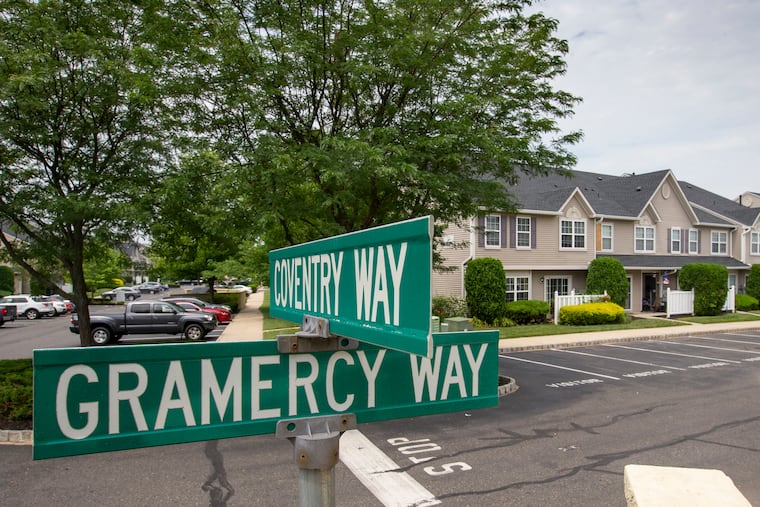Mount Laurel’s racist past goes beyond viral rants to discriminatory housing | Opinion
Mount Laurel has been at the center of housing justice for 50 years.

Mount Laurel flew into national headlines recently as a video of a white man verbally assaulting his African American neighbors went viral — followed weeks later by another clip, this time a woman in Mount Laurel who called a hotel clerk the N-word and was charged with bias intimidation, New Jersey’s version of a hate crime.
Unfortunately, these stories are all too familiar and place this historic community back at the center of the conversation about the intersection between race and housing.
Mount Laurel has had a substantial Black community for over 200 years and played a key role in the Underground Railroad. But with that history has come repeated efforts to push that community out. Fifty years ago, a group of Mount Laurel residents, led by civil rights leader Ethel Lawrence in partnership with the Southern Burlington and Camden County NAACPs, sued Mount Laurel when the town shut down attempts to build garden apartments for lower-income families.
» READ MORE: How a racist rant in Mount Laurel sparked neighbors to fight back and a community to press for change
The New Jersey Supreme Court, in Mount Laurel I & II, declared that municipal land-use regulations that prevent affordable housing opportunities for the poor are unconstitutional. The Mount Laurel Doctrine, as it has come to be known, is one of the most significant civil rights cases of our time; our two organizations have worked for decades to enforce it.
Housing has long been at the epicenter of racial issues within this country — redlining, voting, redistricting, the racial wealth gap, the drug war, education, environment, and more. A person’s zip code is tied directly to their ability to live a healthy and successful life.
As our nation continues to grapple with race and justice, housing justice must be at the top of the list.
The landmark Fair Housing Act signed on April 11, 1968 — over 50 years ago — was the capstone of an era of social change lead by the Rev. Dr. Martin Luther King Jr. and others to “save the soul” of our nation, and it took the tragic murder of King to finally get it passed.
The video, particularly from the July 2 incident in Mount Laurel, depicts an unfortunate truth: While the Fair Housing Act limited the most bald-faced racial discrimination, rampant racism in housing remains. That kind of harassment is just the tip of a broader system that still separates Black families into different housing markets from white families.
Too often, towns like Mount Laurel still prevent and restrict the development of modest starter homes and apartments in a way that falls hardest on Black families due to the gaping racial wealth gap in America. Per our research, New Jersey has created over 70,000 affordable homes in historically exclusionary communities as a result of the Mount Laurel cases. But exclusion remains pervasive especially in coastal suburbs — a national problem recently recognized everywhere from the Bay Area to Long Island.
» READ MORE: Black South Jersey man says he was attacked by white security guard with dog at Adelphia restaurant
Evictions and foreclosures from the COVID-19 crisis also threaten to fall hardest on Black families, disproportionately impacted this past year due to housing and health inequities exacerbated by environmental racism. While New Jersey recently passed a law that bans evictions retroactively for nonpayment of rent during the crisis, practically everywhere else, thousands of Black families will face homelessness now that the CDC eviction ban has ended.
Landlords have further developed new screening tools that import racial disparities from the criminal justice system and the racial wealth gap into the housing market. But in June, we stood beside Gov. Phil Murphy when he signed the Fair Chance in Housing Act into law in New Jersey. The first statewide law of its kind, the act prevents landlords from discriminating against applicants based on their prior criminal records after they have served their time. It serves as a national model.
The work of 1968 continues, especially in Northern states like New Jersey, which often have similar or even more pervasive racial disparities, especially in housing, than the South.
Race and housing will forever be entangled. Tackling one without the other will never net the desired result. But still, there is hope — in the strong community pushback against the vile remarks in Mount Laurel a few weeks ago, in the tens of thousands of homes created through the similar community mobilization decades ago, and in new policies like the Fair Chance in Housing Act. Now we must recommit ourselves to this work. Housing justice is racial justice.
Adam Gordon is executive director of Fair Share Housing Center, a statewide affordable housing advocacy organization. Marcus Sibley is president of the Southern Burlington County NAACP and chairman for environmental and climate justice of the New Jersey State Conference of the NAACP.